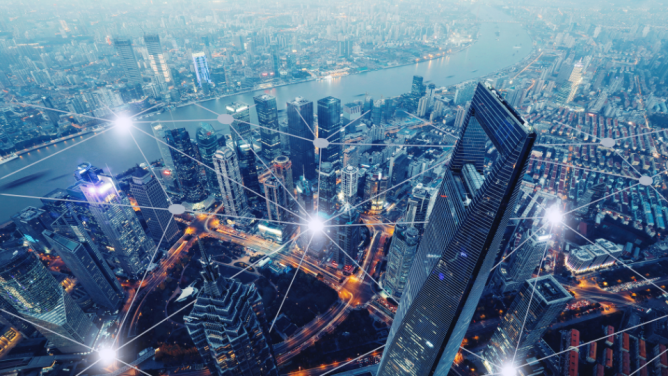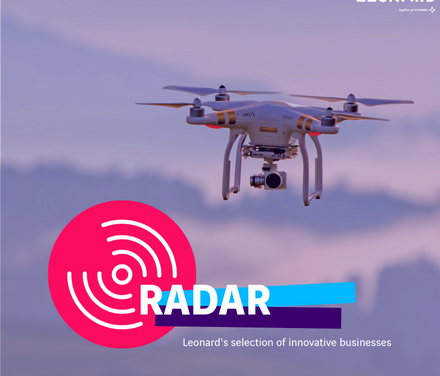This also characterises the growing number of questions people are now asking themselves as they get about: What should I do if I bump into somebody on the street? How should I get around the supermarket? When and how will I get to work now? Just two months later and our thoughts are focused on three main abstract notions on the subject of location. Essentially, they deal with the concepts of “contact tracing”, “social distancing”, and the rather fuzzy idea that we will now have to move and travel “differently”. Here we profile these new abstract notions, which have been focusing the attention of the Leonard community over the last couple of months.
1 – Contact tracing – is this the arrival of a compelling new workplace standard?
Can we live happily in world where we are tracked? “Contact tracing”, a digital approach to common methods used in epidemiology, is the source of much public debate because for a lot of people, this means they will have to “accept mass surveillance without any guaranteed benefits”. Meanwhile, as we await a potential and unprecedented widespread roll-out, it is clear that biometric and health technology focused on data gathering and processing is bound to grow, particularly across workplaces From office buildings to construction sites (including those working from home), employers want to show that they are implementing measures to monitor the health of their staff and therefore ensure the continuity of their business. Technologies such as infrared cameras, apps and web services of all types, AI-powered microphone systems which detect and analyse coughs, are all gaining in popularity. Will these become an inevitable reality?
Thermal cameras monitor construction worker health on NYC contractor’s jobsites (Construction Dive)
Infrared Cameras Could Be the New CCTV – Employers rush to thermal imaging to catch sick worker (One Zero)
Your Boss Is Watching You: Work-From-Home Boom Leads To More Surveillance (NPR)
This AI system listens to coughs to learn where the coronavirus is spreading (The Next Web)
Companies’ use of thermal cameras to monitor the health of workers and customers worries civil libertarians et Infrared cameras, personal towels: China factories go to extremes to fend off virus (The Washington Post)
2 – “Social distancing” or the end of large urban retail complexes as we know them?
Some employers are also making major efforts to use technology to ensure social distancing is being followed, by turning to solutions such as wearables, infrared cameras and apps developed to gather location data.
Dock workers in Belgium are wearing monitoring bracelets that enforce social distancing (Business Insider)
Software companies develop tech safety nets to measure social distancing (Construction Dive)
However, looking beyond workplaces, its “hyper-lieux” (large urban shopping complexes), a concept developed by Michel Lussault, that are looking to reinvent how they use space at a time of social distancing. This is particularly relevant due to their ubiquitous and connected nature, but especially as they are locations which host a large, concentrated number of social interactions. How can shopping centres, airports, train stations, or even a pedestrian shopping streets or centres “get by” and reduce footfall, without giving up their main business of managing high retail traffic? The age-old question of mobility data management plays an important role in the challenges ahead. However, biometric data will also need to be part of this. The use of automation and contactless left, right, and centre seems inevitable, but how will this work in reality? We look closely at the busiest type of large retail complexes: airports
Can airports achieve a touchless future ? (Forbes)
Airlines in Middle East Adjust to COVID-19 Pandemic (Aviation Today)
Airport Automation to Speed Up for a Crisis Rebound With Less Human Contact (Skift)
Airports and biometrics providers work towards relaunch with contactless “new normal” (Biometric Update)
Désinfection à Hong Kong, distanciation payante chez Frontier (Air Journal)
The impact of COVID-19 on airport planning and design (Airport World)
Covid-19 : le pire des technologies pour faire respecter la distanciation sociale (Usbek&Rica)
Bonus « données de mobilité à l’ère pré-Covid-19 » : Trois start-up françaises qui aident les villes à mettre de l’ordre dans la mobilité partagée (L’Usine Nouvelle)
3 – Renewed perspectives: in search of new location paradigms
We must think about how we live in this world (and cities). We must think about our behaviours, our motives, even the reasons for our movements and travels. We must lastly even think about we perceive this world we live in. Amongst the thousands of column inches taken up by the lockdown, here are four interconnected brainwaves, which we feel could guide us in our future actions. This pathway between the need for urban recovery and the need to be mindful of others (in restricted spaces), is a poetic way to describe the possible inefficiency of our future movements and finally our new self-awareness generated from aerial drones shots.
S’inspirer de l’urbanisme tactique pour adapter les villes à la distanciation physique (The Conversation)
Le géographe Michel Lussault et sa proposition d’entrer dans une démarche de care spatial” (Socialter)
Voyager plus lentement : nouvelles géographies post-virales en Europe (Makery) et Mobilité Minimum Viable (La Fabrique des Mobilités)
Looking down (Real Life Magazine)


